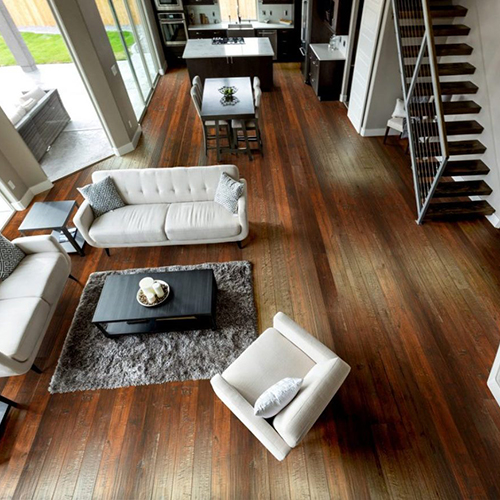How To Choose Dark vs Light Flooring
Related Product: Stock House Vinyl SPC Flooring 17.52 Sq Ft per Carton
When to Choose Dark Floors vs Light Floors
Whether a light floor or dark floor is right for your space will depend on many factors. You’ll need to consider your unique situation to decide which option is best.Choosing Flooring for Indoor Spaces
If you’re working with an indoor space, then start by considering the size of the area. Generally speaking, light floors tend to make an area feel larger, while dark flooring can make a space feel slightly smaller.
As a result, dark flooring is often best suited for large rooms, though you can use light flooring in these spaces if you want to make them feel even bigger. Small rooms can be made to feel larger by installing light flooring in them.
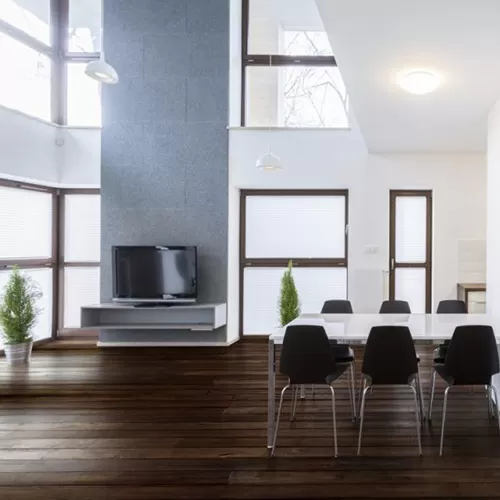
If you’re struggling with a large space that feels cavernous, a dark floor can help to make that space feel more manageable. Some people find that dark floors feel more welcoming or even elegant, so they often prefer them for living rooms or dens.
You’ll also want to consider the decorating that is already present (or planned) within the space. The flooring should coordinate well with kitchen cabinets, the colors of your walls, and the shade of your furniture.
Light flooring often complements dark furniture and cabinets well. Pairing dark flooring with dark furniture can start to become overwhelming, so you’ll want to consider how well those elements go together.
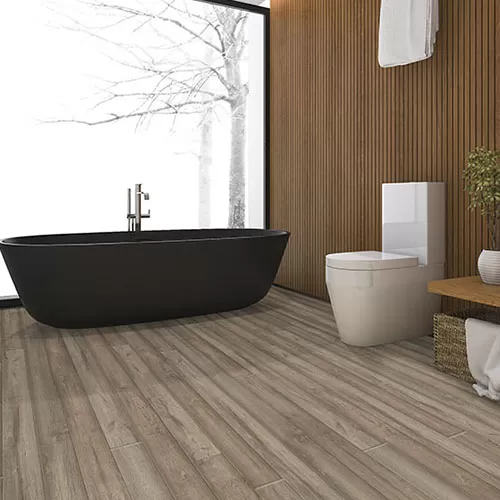
In contrast, light flooring and light cabinets don’t always go well together. Instead, using a dark floor can add some contrast and complement the aesthetic of your light-colored cabinets or furniture.
Consider how much natural light enters the room, too. A room that receives lots of natural light can lead very light flooring to look washed out during the peak daylight hours.
In this scenario, you might be better off choosing a slightly darker flooring product, particularly if this is a room that you will often use during daylight hours, like a living room.
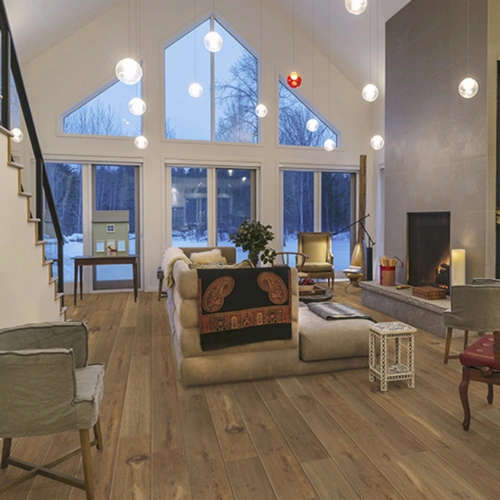
It’s also important to think about how you plan to use the room. If the room will see heavy foot traffic, like a mudroom, a darker floor color will better be able to hide flaws, like water stains or scratches.
Consider your lifestyle, too, such as if you have kids who often wear their shoes into the house, or if you have pets who track in dirt and pet hair. Dark floors can often better conceal dirt and pet hair than lighter flooring products, though this will partially depend on the color of your pet’s hair.
Choosing Flooring for Outdoor Spaces
If you’re choosing flooring for an outdoor space, many of the same above principles apply, but there are some other important factors to consider, too.
Temperature is a concern when choosing a floor for an outdoor space. Darker colored floors, particularly those that are black, absorb more sunlight than light products, so they can heat up faster.
That can be both helpful and a potential issue, depending on how you will use the space. If you’re creating a pool surround that you will be walking on in bare feet, a lighter colored flooring product will stay cooler and should be more comfortable in the hot summer sun.
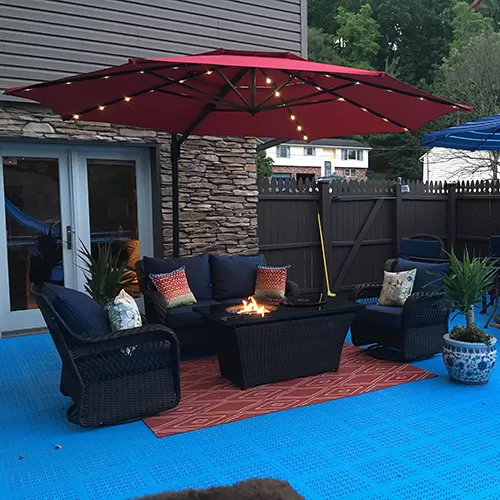
If you live in a cold climate and are choosing a playground flooring that you hope will contribute to snow melt, then opting for a darker colored product can help. A black, dark green, or dark blue flooring product will absorb the sun’s rays, heat up, and help to speed that melting, potentially making the playground accessible sooner.
It’s also important to realize that lighter colored flooring products tend to fade faster than darker products do. A yellow or light orange floor may start to look washed out or faded sooner than a darker colored product will, potentially prompting you to replace the flooring sooner than you would with a darker product.
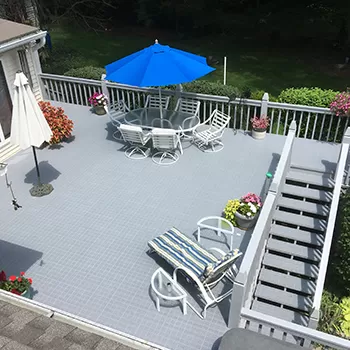
You should also consider how the flooring color works with surrounding colors. You might want to purchase a floor that complements the deck, your patio, the furniture, the color of your house, or any other colors that are present.
The above points can help you to determine if a dark or light floor is best for the space, but they’re really just helpful guidelines. Ultimately, the flooring that you choose needs to match your personal taste and be a product that you’re happy with.
